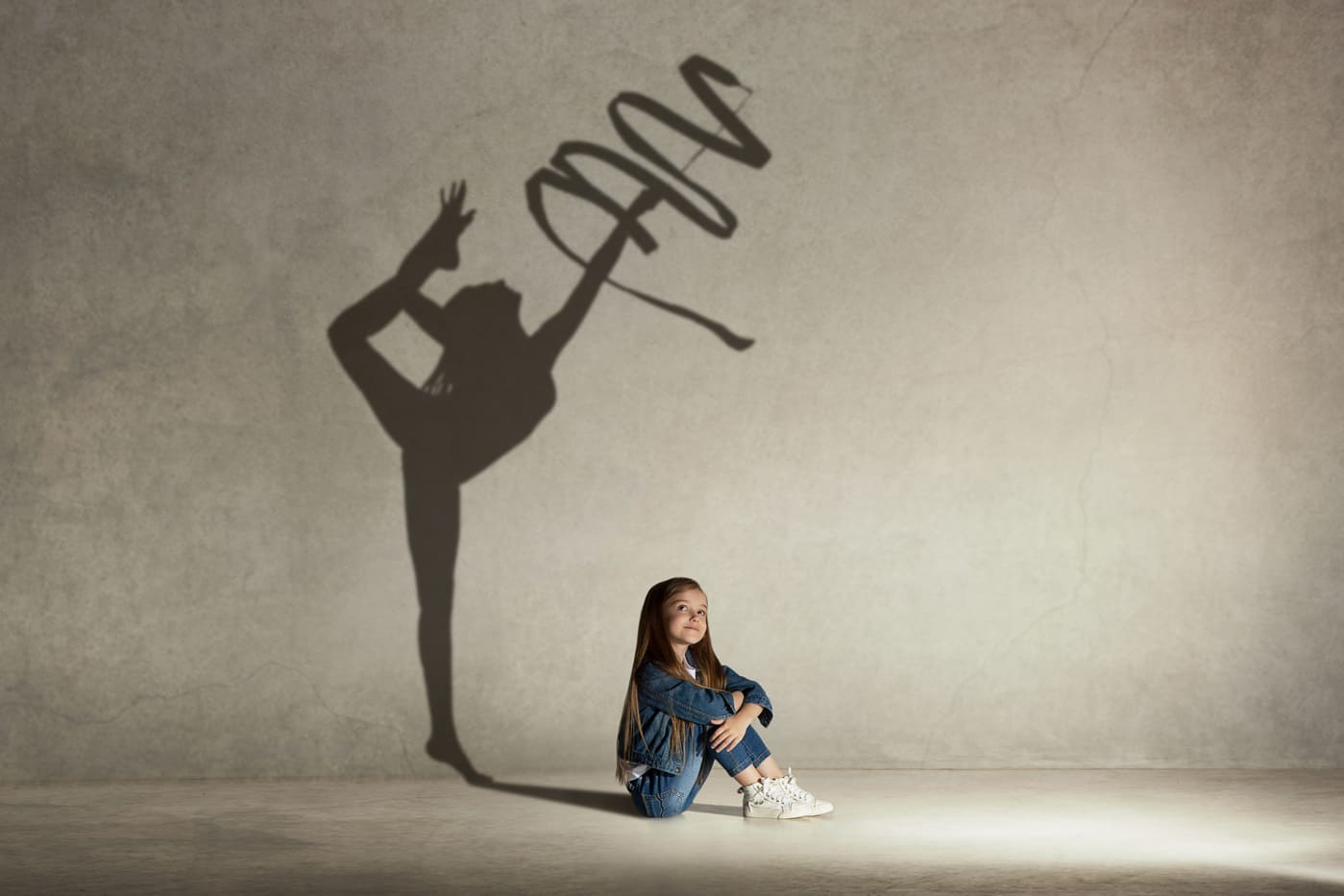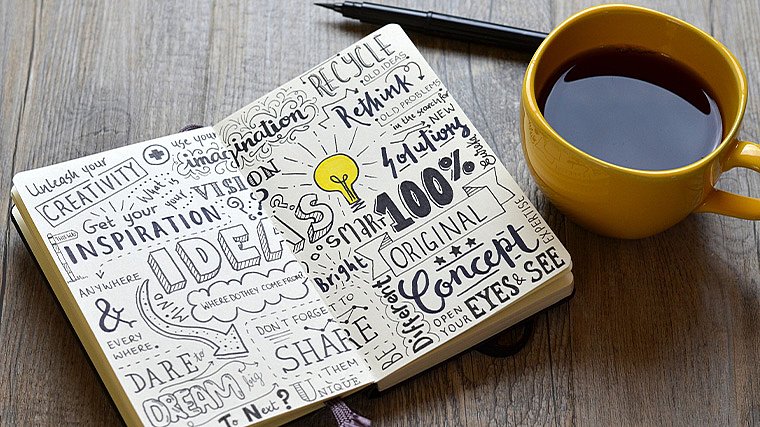Facts and myths about creativity
It turns out that no more than any other requirement, especially the aforementioned foreign language skills. An individual predisposition to learn languages is one thing, and regular memorising of rules and vocabulary is another. As a result, a hardworking and ambitious person can surpass someone who has a ‘natural gift’ for languages. The same will be true for creativity, although some people still believe that it’s purely a talent.
Indeed, some people find it easier than others to think creatively. They are quick to find out-of-the-box solutions, they see opportunities where others would only see obstacles, or they propose innovative approaches to problems. However, two harmful myths need to be debunked. First – those people have no monopoly on creativity, everyone can be creative. Second – creativity is not only about art and it extends well beyond the broadly defined art world.
An engineer with a typical ‘scientific mind’ can be creative, household chores can be done creatively, and you can teach, do sports or even catalogue data in creative ways. So it is hardly surprising that so many employers seek this skill. However, if we understand that creativity can be trained, that it’s not an egalitarian natural gift, perhaps it will be easier for us to grow in this direction.
The role of the brain in the creative process
Well, okay, but still someone may say that it’s the structure of the brain that determines whether such development will happen at all. After all, we have been told for years that the left hemisphere of the brain is responsible for logical thinking, while the right hemisphere determines artistic talents and creativity. We have been taught that this asymmetry is very closely linked to right- or left-handedness (according to this theory, left-handed people are supposed to be more creative ‘by nature’).
Many years, experiments and studies later, however, we know that the reality is much more complex. That’s because the creative process itself is also extremely sophisticated. Depending on the situation, it engages our memory, imagination, but also emotions or motivation to a different extent. As a result, many areas of the brain located in both hemispheres are activated simultaneously.
Today, we’d rather say that in exceptionally creative people, connections between the hemispheres are better developed, promoting a smooth creative process. However, remember that the brain can be stimulated in a variety of ways, which will constantly support its development. The same is true for creativity – we can and we should work on it.

How activity affects creativity
Now we know that creative thinking depends on different parts of the brain and the efficiency of this organ as a whole. Not surprisingly, practising creativity actually influences the brain in a variety of ways. Sometimes it’s quite astonishing, because while we are used to students and white collars sitting at desks, creativity has a lot to do with exercise. There are several reasons for this.
Firstly, exercise supplies oxygen to your brain, and creative processes engage multiple areas of the brain with a strong intensity. Secondly, exercise hampers the activity of the prefrontal cortex for a while, allowing the brain to depart from schematic and rational thinking and switch to areas responsible for creativity. What’s more, exercise engages different senses, which additionally promotes creativity. For the same reason, for example, it is a good idea to speak new ideas out loud, write them down on a piece of paper or present them in a graphical format. This kind of sensory stimulation is a powerful creativity booster.
So it’s safe to assume that if you’re sitting over a blank piece of paper and nothing comes to your mind, the problem may not be you, but... the sitting position itself.
Exercise plays another important role – it allows the mind to rest and lets your thoughts ‘drift away’. An overworked and overstimulated brain will not be creative. Meanwhile, the relaxation offered by a healthy dose of exercise will work perfectly.
Science as a path to creativity
While writing Lolita, his flagship novel, Nabokov was still exploring the niceties of the English language. By learning new idioms and discovering the grammar that was foreign to him, he became, by his own admission, more creative as a writer. No wonder, as learning new skills is the perfect food for the brain. It is no coincidence that creative and out-of-the-box thinking is a childhood privilege. Children’s brains are constantly stimulated by daily exploration of the world. They also use creativity to fill in knowledge gaps. The same is true for adults. Neuroscientists from Drexel University, Philadelphia, studied experienced and novice musicians during improvisations. The experienced ones used the brain parts responsible for logical thinking, which means that they relied on experience even when they created music. Beginners used completely different areas of the brain, using a more innovative approach instead of experience. What does this mean for us? That it’s good for us not only to learn, but also to use our learnings in creative ways. When we establish ourselves as experts, we stimulate different areas of the brain responsible for creativity.
A creative mind is an open mind
Learning new things does not necessarily mean acquiring any specific skills. It’s also about being open to new ideas, stories or perspectives. Experiencing art or talking to people can spark your creativity. Likewise, mental conservatism, indifference to other people’s perspectives and holding fixed views are the villains that kill creativity and hinder the development of your mind. It is no accident that creative thinking is called out-of-the-box thinking. The more we step out of our box, away from our daily routine, the more we practise creativity. Even if it comes down to taking a different route to work or rearranging the furniture in your flat.
Creativity as the art of letting go
Sometimes the best way to exercise creativity can be... to let go. Obsessed with constant self-development, we fall into the perfectionism trap. Constant self-criticism is mixed with shame – perhaps because of what we believe is insufficient creativity. Meanwhile, an experiment on musicians carried out by a researcher from the University of California, San Francisco, demonstrated that creativity is also the art of letting go. The part of the brain responsible for self-criticism, self-control and embarrassment was almost turned off when the musicians were fully engaged in improvisation. The self-expression parts of the brain were activated instead.
So stop wondering if you are creative enough and be more forgiving to yourself. This way you will let the magic happen (with a little help from brain chemistry).
Bibliography:
- https://journals.plos.org/plosone/article?id=10.1371/journal.pone.0001679
- https://www.o2.pl/artykul/kreatywna-i-logiczna-polkula-mozgu-to-mit-sprawa-jest-duzo-bardziej-zlozona-6498310241216641a
